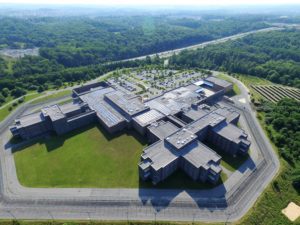In this blog series we’ve reviewed the important steps to take when people are returning to the workplace. In this post we’ll look at the need for resiliency. We’ll also see how keeping your building management system (BMS) up to date can help support three important areas of operational resiliency.
If this pandemic has taught us anything, it is that the world can face a major crisis requiring all types of organizations to act quickly and effectively to maintain operational capacity and keep people safe. For your operations to be resilient you need a building infrastructure that can adapt quickly to changing circumstances and support the actions your facility teams need to take.

To create this type of building requires the latest in BMS technology and services. Building systems, including your BMS, are not static and the supporting technology should evolve to keep up with your operational needs. Today, every building can be a smart building by taking advantage of the newest BMS capabilities, whether that requires updating, upgrading, or replacing your legacy BMS.
3 areas that BMS upgrades can help drive resiliency
1. Connectivity and integration for efficiency and flexibility
Whether a building is at partial or full facility capacity, operational efficiency will always be top of mind. Digitization of your HVAC infrastructure will bring data from connected smart devices, with your BMS application helping you keep your buildings running smoothly, ensuring comfort for occupants, and having the tools for fast diagnoses and resolution of events.
Having the newest BMS capabilities can also help you operate a sustainable building. However, upgrading your BMS system will not automatically result in energy savings. You’ll need to use the technology to implement modern control strategies, which may also require recommissioning data inputs and control outputs.
Modernization of your BMS system is also the key to ensuring healthier facilities, gaining more monitoring and control over indoor air quality, and helping optimize the efficiency of cleaning protocols. And with many organizations restarting with only partial staffing, or a division of onsite and offsite employees, a smart solution will also give your team the tools it needs to manage a smarter, more flexible workplace.
The newest BMS systems are able to support these new challenges by aggregating and integrating data from different systems into one place. This can include HVAC, lighting, safety, security, workplace management, occupant engagement systems, and more. The BMS now acts as a ‘single pane of glass’ with dashboards that present building-wide performance data, making it as simple to control zone-specific temperature and humidity as it is to monitor the status of elevators. And your BMS will now be mobile-friendly, as accessible on your phone as your other apps.
2. Connectivity enables remote operations and advisory services
The pandemic has highlighted the critical need for remote building operations. New IoT-enabled BMS solutions enable remote access for facility teams. Using powerful analytic tools – including comparison against a ‘digital twin’ for deep fault detection and diagnostics – maintenance personnel can evaluate and fix a majority of problems remotely, reducing the number of site visits needed.
Bringing BMS data securely to the cloud opens the door to different levels of support. For example, Schneider Electric offers a first level of support that invites owners of our EcoStruxure Building Operation solution to consent to register. Our solution is supplied with anonymous ‘baseline’ system information that can help us understand the general user population and efficiently gauge the severity of any issues that arise. Users will then be immediately alerted to any updates or fixes that are available.
At the next level, we offer responsive technical support directly to each BMS owner. Finally, a third level of support is especially useful for facility teams that are challenged with limited resources. This level includes EcoStruxure Building Advisor services, delivering customized support that helps you tap into the deeper value of your BMS data. Service experts monitor your facilities 24/7, using advanced diagnostics and proactive remote troubleshooting to help you optimize the reliability and efficiency of your building systems.
3. Cybersecurity helps protect your operations
Cyber attacks are becoming more common and are now a greater threat to operational stability than ever before. With the extensive facility and cloud connectivity of the newest BMS solutions, a strong cybersecurity framework is critical to protecting your facility operations and business.
When upgrading or replacing your BMS, you should ensure that you are choosing a solution partner that is following all cybersecurity best practices and standards at every level. Schneider Electric is certified to the IEC62443-1 cybersecurity standard. Here is a non-exhaustive list of items that should be addressed:
- Penetration and vulnerability tests performed on all components, with retesting on a regular basis.
- Secure data access using one-way reads from controllers, devices, and equipment.
- Network should follow all existing network and firewall security settings.
- Optional data encryption during transfer.
- Subscription-based access using a trusted Internet authentication service.
- Data privacy and protection, with compliance with national and international privacy laws.
A BMS upgrade strategy helps future-proof your facilities
If your BMS is not currently up-to-date or offering the latest capabilities mentioned above, you should be making a plan for a ‘tech refresh’ to upgrade and migrate to a new solution. Here are a few things to consider on that path.
- Beware of old and close-to-obsolete operating systems. For example, if you have a BMS system that is running on the Windows XP operating system, then you need to be seriously planning for some level of BMS upgrade.
- BMS controllers no longer supported. If a controller fails and a replacement is not available, you should have a BMS upgrade plan. Some spare controllers may help tide you over for a while, but you need a long-term plan. If you do not have the budget, you can plan a 1 to 3 year plan to upgrade all the non-supported controllers.
- Find the right relationship. You may wish to replace your BMS simply because you are not happy with the BMS contractor that provided your current system. In this case, having a clear maintenance strategy with a trusted vendor is important. You may need to consider a multi-year plan to reduce the investment per annum, with staged transitions for software and hardware. You should also seek a relationship that not only fixes your current problem, but that also delivers a connected, flexible BMS solution that helps you immediately improve facility performance, while supporting a long-term vision and sustainable decisions.
Visit our EcoStruxure Building site to learn more about how BMS solutions can:
- Deliver actionable insights that facility teams need to better manage and optimize buildings, improve engineering efficiency, and meet increased cybersecurity and compliance needs.
- Offer comprehensive analytic monitoring services that keeps building systems performing optimally, helping you optimize operating costs, occupant comfort and asset value while working with limited budgetary and maintenance resources.



